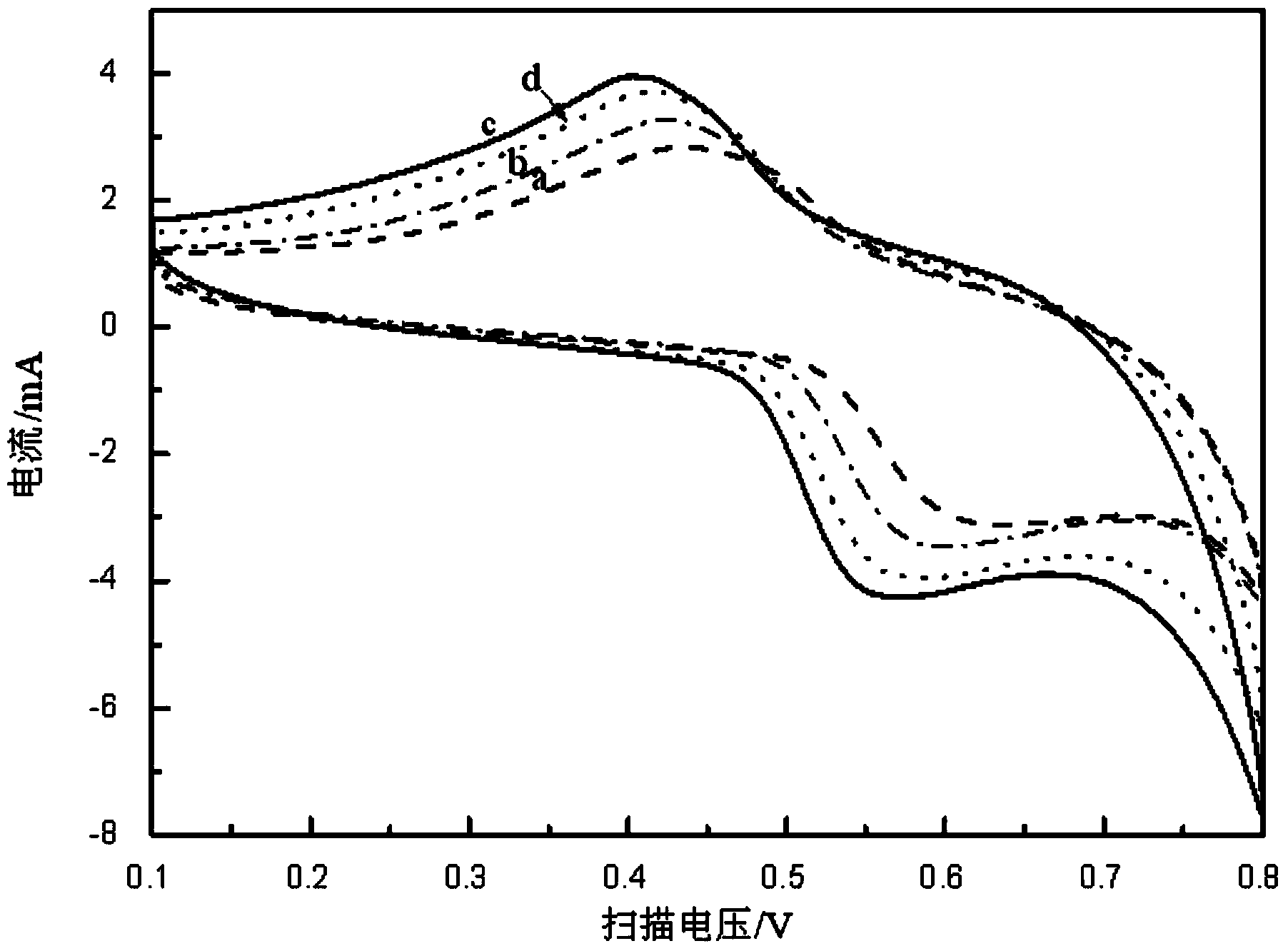Method for determining p-nitrophenol in water system by taking graphene-loaded nano-nickel as electrode
A technology of p-nitrophenol and graphene, applied in the direction of material electrochemical variables, etc., can solve the problems of complex operation and inability to be widely used, and achieve the effect of high detection accuracy and good cycle stability
- Summary
- Abstract
- Description
- Claims
- Application Information
AI Technical Summary
Problems solved by technology
Method used
Image
Examples
specific Embodiment approach 1
[0029] Specific embodiment one: present embodiment is a kind of method that uses graphene-supported nano-nickel as electrode to measure p-nitrophenol in water system, specifically completes according to the following steps:
[0030] 1. Purification of pure carbon electrodes:
[0031] First, soak the pure carbon electrode in concentrated nitric acid for 18h-30h, then polish it with metallographic sandpaper, and then polish it with alumina slurry, and then use acetone and absolute ethanol to clean it alternately ultrasonically until it is completely clean after washing. Until the water and ethanol are colorless, dry at a temperature of 40-60°C for 18h-30h to obtain a purified carbon electrode;
[0032] 2. Preparation of graphene / nano-nickel composite material:
[0033] NiCl 2 ·6H 2 O was added to the ethylene glycol solution and ultrasonically dissolved at room temperature to completely dissolve it, then graphene oxide was added, and ultrasonically oscillated for 1 hour at ro...
specific Embodiment approach 2
[0044] Embodiment 2: The difference between this embodiment and Embodiment 1 is that the particle size of the alumina particles in the alumina slurry described in Step 1 is 0.05 μm. Others are the same as the first embodiment.
specific Embodiment approach 3
[0045]Embodiment 3: The difference between this embodiment and Embodiment 1 or 2 is that in step 1, the pure carbon electrode is first soaked in concentrated nitric acid for 24 hours, then polished with metallographic sandpaper, and then alumina slurry is used Perform polishing treatment, and then use acetone and absolute ethanol to alternately ultrasonically clean until the washed absolute ethanol is colorless, and finally dry at a temperature of 50°C for 24 hours to obtain a purified carbon electrode. Others are the same as those in Embodiment 1 or 2.
PUM
| Property | Measurement | Unit |
|---|---|---|
| particle diameter | aaaaa | aaaaa |
Abstract
Description
Claims
Application Information
 Login to View More
Login to View More - R&D
- Intellectual Property
- Life Sciences
- Materials
- Tech Scout
- Unparalleled Data Quality
- Higher Quality Content
- 60% Fewer Hallucinations
Browse by: Latest US Patents, China's latest patents, Technical Efficacy Thesaurus, Application Domain, Technology Topic, Popular Technical Reports.
© 2025 PatSnap. All rights reserved.Legal|Privacy policy|Modern Slavery Act Transparency Statement|Sitemap|About US| Contact US: help@patsnap.com



